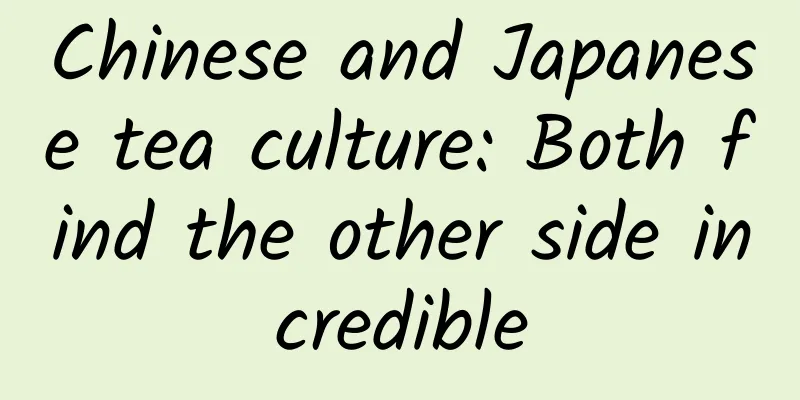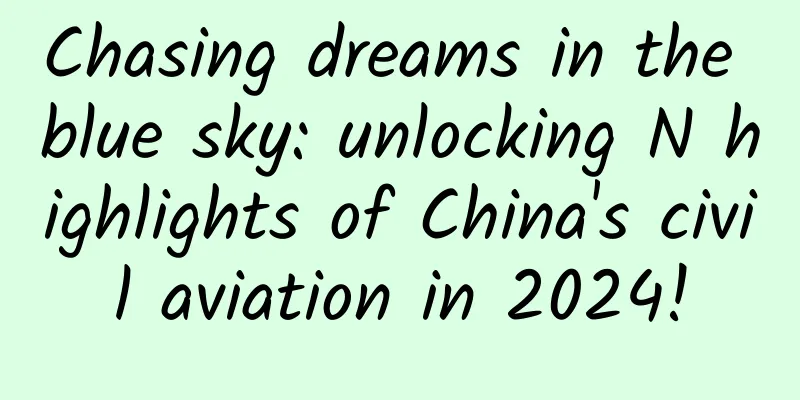Chinese and Japanese tea culture: Both find the other side incredible

|
Chinese and Japanese tea culture: Both find the other side incredible Zhang JinMember of the Intangible Cultural Heritage Working Committee of China Arts and Crafts Association Lu Zhi Cooking tea, buying tea and brewing tea, Tang and Song tea brewing China is the hometown of tea and has a long history of tea drinking and splendid tea culture. At the end of 2021, the archaeological team of Shandong University announced the analysis data of the unearthed objects in the No. 1 Warring States Tomb in the Xigang Cemetery of the ancient city of Zhu State in Zoucheng. In the artifact box on the south side of this tomb of a female noble of Zhu State in the early Warring States Period, a celadon bowl containing carbonized plant residues was completely extracted. Laboratory tests and identification showed that it was the residue of brewed tea, which was earlier than the earliest tea found in the Yangling Mausoleum of Emperor Jing of the Western Han Dynasty. Therefore, the physical evidence of the origin of Chinese tea culture can be traced back to the early stage of the early Warring States Period (453-410 BC), and there is a clear original celadon bowl used in combination, which can be regarded as an early tea set. Interestingly, this celadon bowl was not produced in Shandong nor was it commonly found in Shandong. Instead, it came from the original celadon that was common in the Yue State area of Zhejiang. The celadon jar type and the AMS carbon-14 dating of the tomb owner's teeth show that the tomb and the celadon artifacts date back to the era of Gou Jian, who "slept on firewood and tasted gall" after the Yue State destroyed the Wu State. The tomb owner may have had a strong connection with the Yue State in the south, and the drinking of tea may have come from the south. Imagine that Gou Jian, the King of Yue, may have drunk a cup of tea like this. Prior to this, we all believed that the rise of tea drinking in China began in the Western Han Dynasty 2,000 years ago, as evidenced by the words "cooking tea" and "buying tea" in Wang Bao's "Tong Yue" in the Western Han Dynasty. At that time, Bashu was famous for its tea production. However, the appearance of tea in records is not the same as the formation of the tea drinking trend. The original way of drinking tea was very casual. Boiling tea was similar to cooking soup. Sometimes tea was boiled with onions, ginger, dates, orange peel, dogwood, mint and other things. It was not until the Jin Dynasty that a more sophisticated way of drinking tea, "boiling tea", began to appear, which was to grind the tea leaves into powder and then boil them separately in boiling water. During the Tang Dynasty, tea drinking became popular throughout the country and has since become a daily drink for Chinese people. Lu Yu, known as the "Tea Saint", was active in the middle of the Tang Dynasty. His "The Classic of Tea" is the world's first tea monograph and has made a great contribution to tea culture. Tea sellers in later generations would place a porcelain statue of Lu Yu next to the tea stove. When business was good, they would offer tea as a sacrifice to show their gratitude. When business was bad, they would pour hot water on the tea as a punishment. The Song Dynasty was the peak of the development of tea culture in my country. The emperor and nobles loved drinking tea, and "making tea by pouring water" was popular at that time. That is, grinding the tea leaves into powder, putting them into a tea bowl, and then mixing them with water. During the Ming Dynasty, under the promotion of Emperor Zhu Yuanzhang, who was born in poverty, loose tea with low cost became popular, and the drinking method was simplified to brewing tea, that is, putting tea leaves into a cup and then pouring hot water in. This simple way of drinking tea has been passed down to the present day. Japanese tea culture: from copy and paste to self-innovation Many Japanese cultures have been deeply influenced by China, and tea culture is no exception. At first, Japanese tea culture copied and imitated Chinese tea culture, and later Japan gradually combined local characteristics to form a unique "Japanese tea ceremony". Japan's study of my country's tea culture was mainly during the Tang and Song dynasties, with monks as the main group. In the 20th year of the Zhenyuan reign of the Tang Dynasty (804), the Japanese monk Saicho went to Mount Tiantai in Zhejiang to study Zen. He returned to Japan the following year and brought back spring tea seeds from Mount Tiantai. He planted them at the Hiyoshi Shrine at the foot of Mount Hiei in Kyoto, marking the beginning of the history of tea cultivation in Japan. He also taught the "Tea Classic" he brought back from China to the Japanese. Emperor Saga attached great importance to this and wrote a poem to praise him. In the same year, the Japanese monk Du Yongzhong, who had studied in China for more than 20 years, returned to Japan and practiced in Fanshi Temple. A few years later, when Emperor Saga arrived, Du Yongzhong used the method of brewing tea cakes that he learned in the Tang Dynasty to offer tea to the emperor. Emperor Saga vigorously promoted tea drinking, thus forming the famous "Hongren Tea Style". During this period, Japan's tea culture was almost completely copied from the Tang Dynasty, without any innovation of its own. Japanese tea people created many poems related to tea, and the rhythm and rhythm are very similar to Tang and Song poems. However, most of them were improvised while drinking tea, so they mostly adopted the question-and-answer format, which is slightly different from China. After that, Japanese tea culture declined for a period of time, but began to revive in the Kamakura period (1192-1333). This was largely due to Zen Master Eisai. Zen Master Eisai was revered by the Japanese as the "Ancestor of Tea", and his status in Japan was equivalent to that of Lu Yu, the "Tea Saint" in China. He studied in the Song Dynasty and returned to Japan in the second year of Shaoxi in the Southern Song Dynasty (1191), bringing back a large number of Buddhist scriptures and tea varieties. Zen Master Eisai gave the tea seeds he brought back to Master Huiming of Kosanji Temple, who planted them in the tea garden of Togao. Togao tea has a high status in Japan and has been called "original tea" for a long time, while tea produced in other places can only be called "non-tea". He also combined Chinese Buddhism and tea ceremony and wrote "Drinking Tea for Health Preservation" in Chinese, which is the first tea drinking monograph in Japan. He introduced the "tea-making" of the Song Dynasty to Japan and laid the foundation for the formation of Japanese Matcha tea ceremony. However, Master Rongxi focused on the health care function of tea. In his book "Drinking Tea for Health", he regarded tea as "the magic medicine for health care" and "the medicine for all diseases". This statement is unbelievable in China, the origin of tea, and actually reflects the habitual exaggeration of the role of hard-won foreign goods. After Zen Master Eisai, tea drinking gradually became popular in Japan. It was popular in Zen temples at first, and later Japanese nobles and samurai appreciated the fun of tea drinking, and the trend of holding tea parties arose in Japan. According to Master Xuanhui's "Tea Drinking and Exchange", senior samurai at that time built exquisite tea pavilions and held tea parties there. After serving tea to guests, they would play a gambling game called "Four Kinds of Ten Teas", which is a bit like the Chinese "Tea Fighting" where people compare the taste and quality of tea. But at that time, there were not as many types of tea in Japan as in China. They mainly guessed which of them were "original tea (Tsuchiyao tea)" and which were "non-tea (other tea)" to determine the winner. However, this kind of luxurious tea ceremony was considered "disrespectful" and "disrespectful", and was considered to be a corrupt behavior. Therefore, when the eighth shogun of the Muromachi shogunate, Ashikaga Yoshimasa (1449-1473), ordered Noami (1397-1471) to establish the "Shoin Tea" held in the Shoin building, which was a solemn aristocratic tea ceremony. Later, Ashikaga Yoshimasa appointed Murata Shuko (1423-1502) as the chief tea master to preside over the tea ceremony. Murata Shuko combined the tea ceremony of temples, the folk "tea ceremony" and the tea ceremony of noble academies, and injected the spirit of Zen, eliminating all luxurious furnishings, and formed a simple thatched tea style. The word "tea ceremony" in Japanese was first used by Murata Shuko, and before that it was only called "tea soup". Murata Shuko believed that the ultimate goal of "tea ceremony" was peace in the world, that is, it served to consolidate the feudal order of Japanese society. In the middle of the 16th century, Sen no Rikyu (1522-1592) further popularized the tea ceremony. He changed the Four Noble Truths of the tea ceremony proposed by Murata Shuko, "respect, respect, purity, and tranquility", to "harmony, respect, purity, and tranquility", that is, the serious "respect" was changed to the gentle "harmony". However, he also emphasized "respect", which was reflected in the etiquette of the tea ceremony, which was a reflection of interpersonal relationships under the feudal hierarchy of Japan. Since medieval Japan was a society centered on samurai, the status of samurai etiquette was very high and had a great influence. The tea ceremony in the samurai etiquette of the Ogasawara school, which absorbed some of the rules and regulations of Zen temples, was accepted by the tea ceremony to a great extent. The Japanese tea ceremony, which was handed down from Sen no Rikyu and gradually became standardized, has very detailed regulations in terms of teahouse architecture, tea sets, brewing techniques, clothing, movements and even language. Even when entering the teahouse, whether to step with the left foot or the right foot first, which tea set to put on which row of weaving patterns on the straw mat in the room, the so-called "mesh" (a standard straw mat is 1.9 meters long and has 62.5 meshes), whether the path of the tea set in the air is straight or curved, how many sips a bowl of tea should be taken, when to ask which questions and how to answer them, all must be carried out meticulously according to the established rules. Moreover, the host and the guests must frequently exchange greetings during a tea party. A tea party takes about 4 hours. According to statistics, a host and three guests perform 213 greetings during this period. Depending on the occasion, there are three forms of greeting: regular, cursive, and cursive. If the number of greetings is too many or the gestures are too modest, it is also considered impolite. It is really cumbersome. Etiquette, whether in Japan or ancient China, is used to maintain and cultivate social order, and the same is true for tea ceremony etiquette. Moreover, since Sen Sotan, the third-generation grandson of Sen no Rikyu, the Senke-ryu tea ceremony has adopted the iemoto system of succession. The eldest son is called "iemoto", who inherits the ancestor's business and name, and only marks the number of generations to distinguish; other sons not only cannot inherit the tea business, but also have to change their surnames. "Iemoto" teaches tea skills to disciples who enter the art and issues certificates of different levels. Through these activities, he manages the disciples and has undisputed authority in this school. Climbing into a tea room? There are even stranger places! From a Chinese perspective, there are still many things in the Japanese tea ceremony that are difficult to understand. For example, the entrance of the standardized thatched teahouse where tea ceremonies are held is 70 cm high and wide, and guests must crawl on their stomachs to enter. Such hospitality is unimaginable in China. In the eyes of Japanese tea masters, the teahouse is a pure world that transcends the mundane world, and it must be separated from the mundane world by such a narrow door. Therefore, the English translation of teahouse is Abode of fancy (a house of fantasy) and Abode of unsymmetri-cal (an asymmetrical house). The interest here is called "wabi" in Japanese, and the orthodox tea ceremony is called "wabi-cha". The meaning of "wabi" is not easy to define. In short, "wabi" means to abandon vulgar things and seek the beauty of tranquility without any artificiality from the formless enlightenment of "Zen joy". However, despite this, this beauty still has to be placed on ordinary and mundane objects. Even among the guests entering the quiet tea room, they must be distinguished into regular guests, secondary guests and final guests according to their social status, not to mention the numerous etiquettes. Therefore, the "harmony, respect, tranquility and tranquility" advocated by the tea ceremony itself contains contradictions that are difficult to resolve. And such a contradictory unity cannot be regarded as just a food culture, a living art or a ceremonial social activity. It can only be like what Okakura Tenshin (1862-1913), who first introduced the Japanese tea ceremony to the Western world, said in his book "The Book of Tea", that the tea ceremony "is a religion of aestheticism". This tea ceremony that goes beyond the present world is unique to Japan and is qualitatively different from Chinese tea culture. Due to the relatively free combination of Chinese characters, the phrase "tea ceremony" has appeared in ancient Chinese documents. For example, Jiaoran, a monk who was a contemporary of Lu Yu, wrote the word "tea ceremony" in his "Tea Drinking Song". However, the meaning of this "tea ceremony" is equivalent to "tea affairs" or "tea art", which is different from the "tea ceremony" in Japan. The drinking of powdered tea in Japanese tea ceremony was originally learned from the practice of drinking powdered tea in the Southern Song Dynasty. However, the Chinese way of drinking tea has changed a lot since the Yuan Dynasty, while the Japanese tea ceremony has always used the powdered tea that has become extinct in China, so it cannot continue to be linked to the new development of Chinese tea affairs. Japan cannot produce high-quality tea cakes like those in the Song Dynasty of China, but it wants to maintain the custom of drinking powdered tea, so it directly crushes the tea leaves into tea powder, which is green in color and bitter in taste. In particular, the strong tea is almost difficult to swallow. The Japanese also think that drinking this kind of strong tea on an empty stomach may damage the gastric mucosa, so they have to eat "tea kaiseki (a tea meal, including mixed cold dishes, stews, grilled fish, wine, rice and miso soup)" before drinking. Although this is consistent with what Eisai said, "Tea is the best of all flavors, and bitterness is the best of all flavors", it is completely different from the spicy soup tea before the Six Dynasties in China, the sweet milk tea of the Tang and Song Dynasties, and the clear tea of the Ming and Qing Dynasties. At the same time, when making tea in Japan, people do not use a soup pot but scoop it from the tea pot, which also makes people feel specious compared with the brewing method of the Song Dynasty. China does not have the kind of tea ceremony that Japan has, because the historical background and social customs of the two countries are different, and the views on tea are also different. Since the Song Dynasty, China has believed that "the use of tea is no different from that of rice and salt." Yuan opera often says, "The seven things you need when you open the door in the morning are firewood, rice, oil, salt, soy sauce, vinegar and tea." The Chinese treat tea with a practical attitude. Not only do Chinese civilians never regard drinking tea as a religious act, but even Lu Yu, who is revered as the "Tea Saint," has his porcelain statue doused with boiling water. This is also incredible to Japanese tea people who practice the "Iemoto system." |
>>: If humans could regenerate organs like some animals, would they be able to live forever?
Recommend
Google advertising strategy
How can we achieve twice the result with half the...
Lizhi APP Product Analysis
This article aims to analyze the current status o...
Ideal Auto: In August 2022, Ideal Auto delivered a total of 4,571 vehicles, two-thirds lower than its peak period
Ideal Auto released its sales results for August,...
Zhang Defen's spiritual growth course seven forces to shape your inner goddess
Zhang Defen's spiritual growth course seven f...
Be careful in the rainy season! Wading in the water after the rain may cause poison
Guangzhou has been hit by heavy rains since May, ...
When did elephants disappear in Zhejiang?
In August this year, we were delighted to hear th...
Why are my allergy symptoms so severe but cannot be diagnosed?
Diagnosing allergies depends not only on immunolo...
Weibo Fantong & self-media traffic, how to make 1 million per month?
Preface | As everyone has experienced—— iPhones h...
A brief analysis of the three elements of copywriting: background, conflict, and answer
It’s always good to know some copywriting skills....
Hens blush! What, hens blush? | Natural Trumpet
Blushing hen Chickens can actually blush! In a re...
Talk about the user growth system: A brief analysis of the user growth system of "KEEP"
1. What is the user growth system? The user growt...
QQ Members’ 20th Anniversary New Feature “Energy Value” Launched: See How Much Your QQ Is Worth
QQ Member was born in 2000. On its 20th anniversa...
A glass of beer costs hundreds of dollars, is it a tax on your IQ?
In recent years , craft beer has become popular i...
NetQin launches new employee welfare policy, happiness index soars
Earlier this month, it was reported that Apple an...









